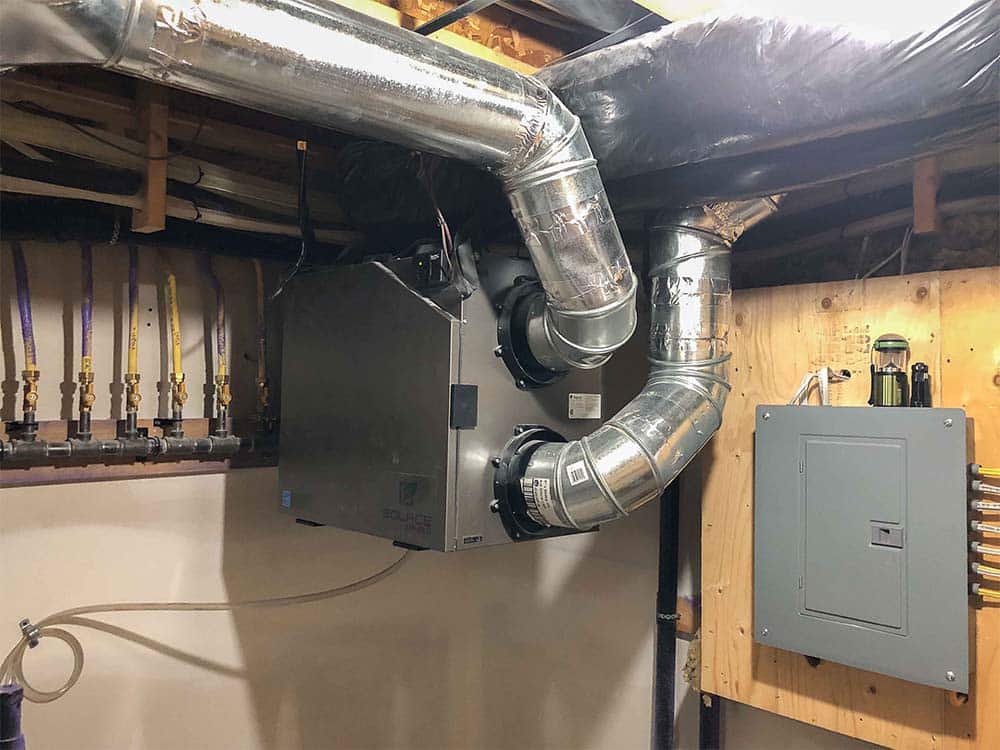Everyone wants their home to be as airtight as possible so that you can maximize the use of your heating system in the winter and your air conditioner in the summer. Thus, expenses are decreased, and productivity is increased.
This is ensured by the energy rating criteria that new buildings must meet. The risk of moisture buildup also increases with this improvement in thermal performance. Showering, cooking, and drying clothing in the dryer, for example, add moisture to your living spaces on a daily basis.
Poor air quality brought on by a lack of natural ventilation can seriously exacerbate asthma and respiratory issues. Not to mention mold and humidity.
How does Heat Recovery work?

The indoor air quality and energy efficiency of your home will both be considerably improved by a Heat Recovery Ventilation (HRV) system, a type of mechanical ventilation. When planning a new construction, a heat recovery system should be taken into account because it is primarily made to supply air movement in an airtight home. The idea is removing stale air that is at room temperature and bringing in fresh, filtered outdoor air. The fresh air that is introduced to replace the extracted air as it passes through a heat exchange device has about the same temperature as the withdrawn air.
If you are remodeling an older home and making adjustments to enhance thermal performance (such as installing insulation, new double-glazed windows, or covering trickling vents), a heat recovery system is also a smart addition.
Essential Benefits Of Heat Restoration
Bring purified, outside air inside the house.
Significantly enhance indoor air quality—ideal for people who suffer from allergies or asthma. Indoor relative humidity rises as a result of inadequate ventilation.

Practically speaking, you might not need to run your heating as high in winter, which corresponds to power bill savings. Heating and cooling that would have been lost through open windows is kept. About 50% of the heating energy might be lost if a window is left open while the heating is on.
Ventilation becomes both functional and energy-efficient.
By eliminating water vapour, you can stop mould formation and other harm.
reduction of toxic emissions, such as carbon monoxide, sulphur dioxide, and nitrogen oxide produced by heating and cooling, or toxins from household cleaners.
Make sure the amount of air entering and leaving the living space is equal to maintain pressure equilibrium.
Two Formats Of Heat Recycling
Centralized
A total house solution, ideal for remodeling or new construction of a medium to large home. A single main unit, which is how centralized systems work, can be set up to air every room through ducting that is normally located in the roofspace. These systems work well for moving big volumes of air in brand-new construction or in older structures with enough room to install a unit
De-Centralized
A single unit that’s ideal for small spaces (such a one-bedroom apartment, a standalone bungalow, or modifications in a structure where a centralized solution isn’t possible). These systems are simpler to install and don’t need ductwork. It is usually advised to install these units in pairs so that the other will supply while the first is in the extraction cycle. Units are often positioned in a corner of a wall, up high.
Do Houses Needed A Lot Or A Little Of Fresh Air?

Fresh air needs to be pumped into sealed spaces frequently. The size of the living area, the number of extraction sites, and the number of people in the house are some of the factors that affect the necessary extraction rate. A minimum hourly air change might be 0.4 to 0.5 times the area volume as a very general rule of thumb. Something more advanced might be needed in a more demanding situation.
It’s vital to restrict the extraction rate per outlet with a centrally controlled system in order to account for the draft sensation.
For this reason, it’s crucial to consult a professional while assembling a system.






GIPHY App Key not set. Please check settings